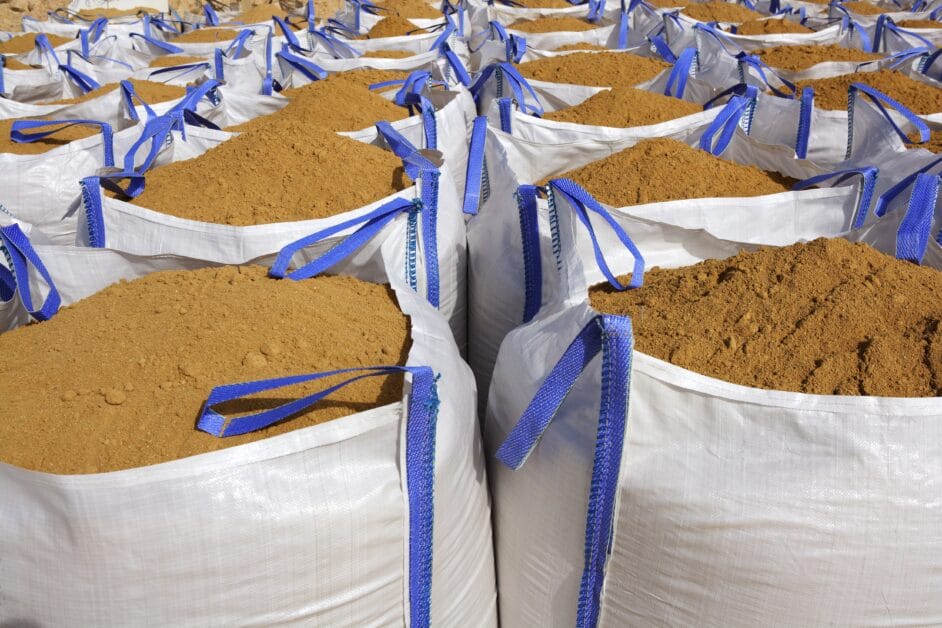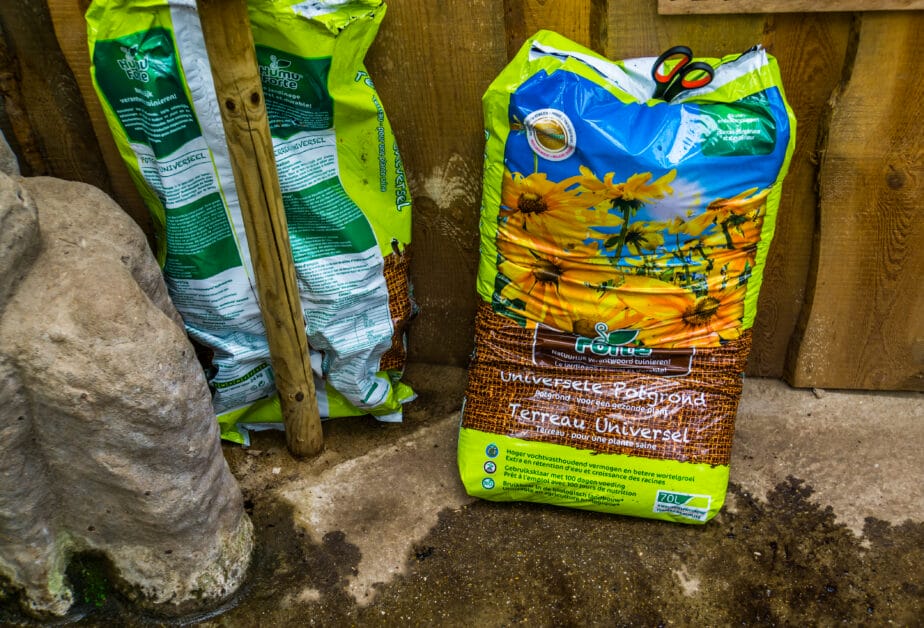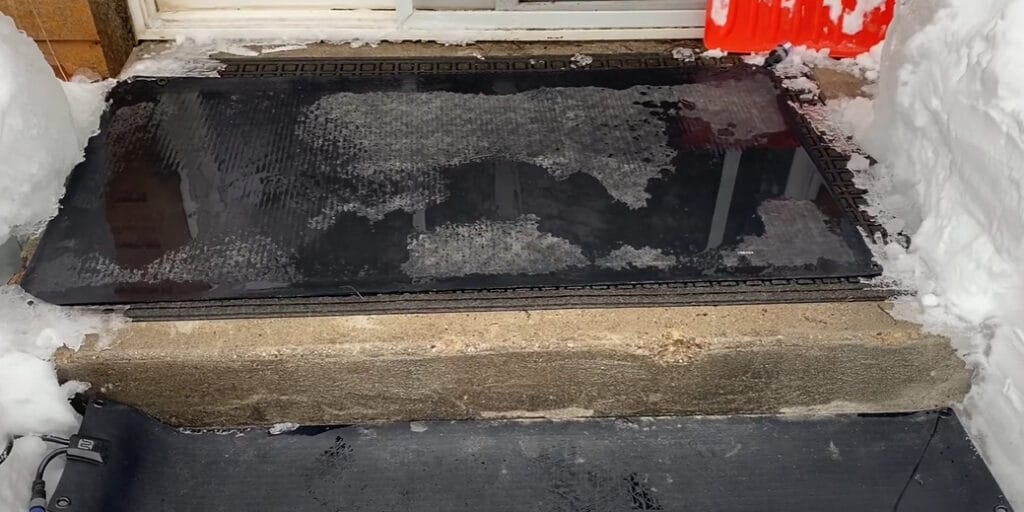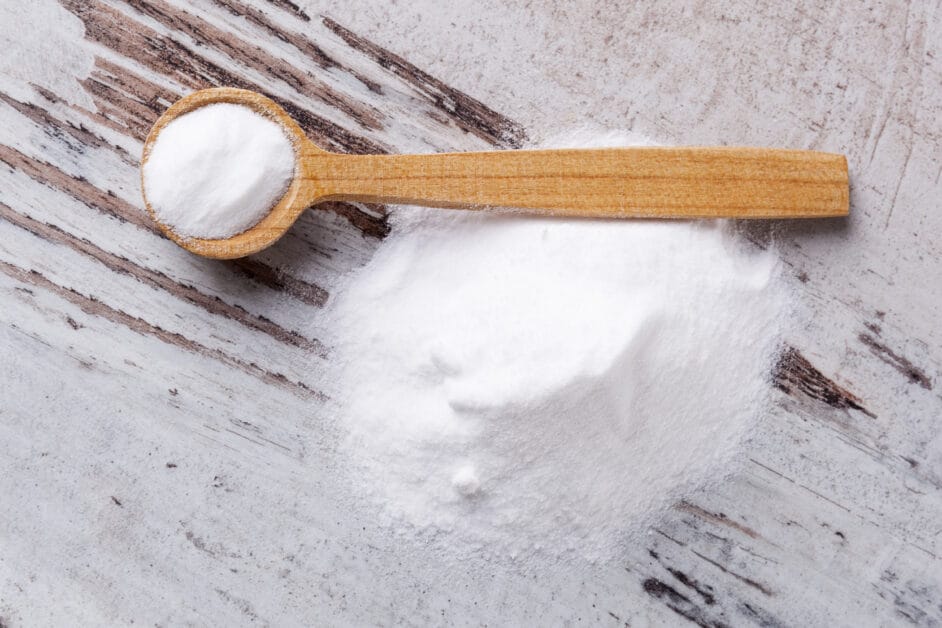Ice, Ice, Go Away: 7 Genius Ways to Banish Ice Without Salt or Chemicals (Guide)

While many rely on rock salt to clear their driveways and walkways, it’s not always the best solution.
Below, I will share seven ways to melt ice without salt or ice melt. These methods protect your property and loved ones and help you stay prepared when stores run out of rock salt.
What I’ll cover:
- 1 🔥: Heating Mats
- 2 💧: Hot Water Thaw
- 3 🌱: Fertilizer Melt
- 4 🍾: Vinegar Solution
- 5 ☕: Coffee Grounds Technique
- 6 🏖: Sand Traction
- 7 🧂: Baking Soda Method
Let’s Dive in!
1. Coffee Grounds

Have you ever brewed a pot of coffee and discarded those used coffee grounds? I’ve got a tip for you. Save those coffee grounds! They’re a great option for melting ice on your porch and driveway.
The magic secret here is the nitrogen. Coffee grounds contain nitrogen, and it’s this nitrogen that helps to lower the melting point of ice. A typical homeowner may not realize this beneficial property of coffee grounds.
On top of that, the natural dark color of coffee grounds also contributes to the role. Dark objects absorb sunlight better, which also applies to coffee grounds.
The sun’s rays are absorbed effectively by the dark color, which, in turn, helps to increase the melting speed of the ice. So, while it might seem like a simple home trick, there’s some nifty science happening right there!
This method allows you to make good use of something that would otherwise be thrown out and provides a natural, cost-effective solution during those colder months.
2. Sand in Ice Management

When winter hits hard, and the driveway’s like a skating rink, you might find yourself out of rock salt. Don’t fret! There’s an alternative that’s as common as, well, dirt. Sand – yes, plain old sand – can be a game-changer here.
Unlike salt, sand doesn’t dissolve in ice. It serves a different purpose. What it does is create traction. This ensures you’re less likely to slip on those icy surfaces.
Swapping your ice melt for sand seems like an effortless change. However, like every solution, sand also has its pros and cons. Its application won’t melt ice, but it will give you and your car extra grip on the surface. No slipping or sliding!
So, do we sprinkle it over our concrete driveways and sidewalks and let it do its magic? Not quite. While it’s a solid alternative when you’re out of rock salt, remember to sweep up the excess when possible.
Sand can negatively affect your sewer system and become problematic for resident wildlife if it builds up in large amounts. You may also want to check the soles of your shoes before stepping inside, as it can create a mess inside the house.
3. Fertilizer: An Alternative Ice Melt Solution

That’s right, plain old Fertilizer can be your secret weapon against icy patches. Now, it’s not as speedy as rock salt. It takes its time, slowly lessening the ice’s grip.
But guess what? Many fertilizers contain potassium chloride, urea, or ammonium sulfate, all common components in commercial deicing products.
The kicker? Unlike some rock salts, these fertilizers won’t wreck your yard or pavement. Scatter the fertilizer like you would rock salt when you’re in a fix.
But tread lightly with ammonium sulfate. While it’s effective at melting ice, it’s pretty harsh on concrete and has unfortunate side effects on our wildlife.
With urea, we must tread lightly. Hailed as safer than rock salt for greens and plants, it carries its baggage. High nitrogen content, if over-applied, tends to slip away into our waterways. This can trigger algal blooms, which is bad news for our aquatic friends.
4. Snow Melting Mats: A Hassle-Free Choice

When it’s not ideal or feasible to employ conventional ice-melting methods, snow-melting mats offer a simple and hassle-free alternative. Shoveling and brushing away snow can be back-breaking work, and that’s where these mats come into the picture.
Special sensors activate the heating element residing just below the mat surface by incorporating a technology not too dissimilar to radiant floor heating.
This activation occurs when temperatures fall below the freezing point, transferring heat to the mat surface and, in turn, melting any snow or ice present. You get a clear, safe, and navigable path without lifting a shovel or straining your back.
Snow Melting Mats are particularly ideal for those smaller, high-traffic outdoor areas. Think walkways, entrances, steps — all places where it’s critical to avoid icy conditions for safety’s sake.
They’re more affordable than complex snow-melting systems installed beneath hardscaping and easier to manage. When winter departs, roll them up and stow away in your garage or storage space.
When it comes to larger areas like driveways, specific driveway snow-melting mats are available. Installation is simple. Lay down the mat, plug it in, and your driveway becomes safer, devoid of slippery ice patches.
Like their walkway counterparts, these mats are easy to store when out of season, awaiting their time to shine when winter rolls back around.
These mats give you freedom from traditional rock salt or other ice melt solutions. Rocksalt can damage your yard, pavement, and the local ecosystem.
Snow melting mats, on the other hand, respect your landscape and the environment. So, when asked for an effective, eco-friendly way to keep your outdoors ice-free this winter, remember to check out snow-melting mats.
Consider them an investment in safety, convenience, and eco-friendly living. Choosing the right mat depends on factors like the size of the area and your budget.
5. Vinegar: An Excellent Homemade Ice Melt Alternative

You may be surprised to learn that Vinegar, the familiar household item, is an excellent alternative to rock salt for melting ice. It’s all due to its high acetic acid content. This natural chemical compound can effectively lower the freezing point of ice, making it easier to melt.
Sure, it may not work as quickly as rock salt, but it’s a handy option when you’re in a bind or trying to avoid the environmental impact of salt-based ice melts.
You may ask, how do I use vinegar to remove ice? It’s as simple as 1-2-3.
- Grab some pure vinegar. While you can use it alone, mixing equal parts of vinegar and hot water for maximum efficacy is best.
- Pour the solution over the thick ice sheets. You’ll notice it starts to melt the ice almost immediately.
- Once the ice has softened, break it down into smaller chunks using a shovel.
Remember to diligently remove the resulting water from your driveway, path, or porch. Otherwise, it may re-freeze, creating even more ice to deal with.
6. Baking Soda – A Less Corrosive Alternative

Have you ever considered Baking Soda a potential solution for icy problems? Baking soda operates similarly to rock salt – it helps lower the water’s freezing point and reduces the likelihood of ice formation.
However, its reduced corrosiveness sets it apart from rock salt. It’s less alkaline and, therefore, causes less harm to surfaces and the environment.
The application of baking soda for ice-melting purposes is straightforward. Manually spread it over frozen areas, and it’ll work its magic.
Here’s a special tip – if you’re expecting snow, you can get ahead! Preemptively sprinkle baking soda on pathways, roads, and other surfaces to prevent ice from forming.
Remember, proactive ice management can not only save time and energy, but it might also prevent an unwelcome icy rendezvous.
7. Hot Water: An Effective Solution

Are you dealing with stubborn patches of ice on your minor commercial premise? The simple use of hot water can be a quick and effective solution. It’s true – hot water starts acting immediately, rapidly melting the ice.
With hot water, you’ll have the upper hand, keeping the space practically clear of ice before it even has a chance to form. It’s a tad more time-consuming, but the result is worth the effort.
Right at your doorstep or in especially stubborn areas, hot water can be your best ally in the battle against ice. Here’s a simple trick. Boil a large pot of hot water and gently pour it on the troublesome icy surface.
You’ve already cut the ice to size; now it’s cleanup time. Break out the broom and sweep the water off the surface to stop it from getting cold and freezing up again.
Then, if you want, you can sprinkle a little salt. Using hot water reduces the salt you need, making it a more eco-friendly solution.
One crucial tip here: always clear the snow first! The more snow and ice you get away with from the get-go, the less you’ll need any de-icing compound in the melting process.
Cost Comparison: Weighing the Price of Eco-Friendly De-Icing Alternatives
We often reach for the tried-and-true rock salt to keep our walkways and driveways safe during the frosty months. But as we grow more environmentally conscious, alternatives creep into the conversation, each with its own cost and benefits.
Below, we delve into a cost comparison of various de-icing methods, stacking them up against the good ol’ rock salt.
| De-icing Method | Average Cost Per Pound | Cost Compared to Rock Salt |
|---|---|---|
| Rock Salt (Sodium Chloride) | $0.08 | Baseline |
| Coffee Grounds | Free – $0.10 | 0 – 1.25x Higher |
| Sand | $0.10 | 1.25x Higher |
| Fertilizer | $0.20 – $0.30 | 2.5x – 3.75x Higher |
| Snow Melting Mats | N/A | Upfront Cost is Higher |
| Vinegar | $0.30 – $0.60 | 3.75x – 7.5x Higher |
| Baking Soda | $0.15 – $0.30 | 1.87x – 3.75x Higher |
| Hot Water | Negligible | Variable |
The costs for items like coffee grounds can be negligible if you’re using recycled grounds from a local coffee shop, while snow melting mats have a higher upfront cost but might save money in the long run since they’re reusable and don’t require refills.
Vinegar and baking soda can be costlier than rock salt but less environmentally harmful. Hot water is tricky because while the cost of water might be low, using hot water regularly can be impractical and potentially hazardous due to the risk of refreezing.
Maintenance Tips

When you’ve taken the initiative to switch out salt for more eco-friendly alternatives to combat icy surfaces, you’re not just doing your driveway a favor; you’re pitching in for Mother Nature.
Now, the key is to keep things in top shape after you’ve applied these alternatives. Let’s break it down:
- Keep it Shoveled: Whether you’re using beet juice or coffee grounds, always start with a clean slate. Regular shoveling prevents ice from forming a bond with the pavement, which makes these alternatives more effective.
- Apply Early and Evenly: Don’t wait for the ice to throw a party. Get your eco-friendly de-icer down before the storm hits. And when you do, spread it evenly. Clumps lead to waste, and areas that are unevenly covered can refreeze.
- Sun’s Your Sidekick: Take advantage of sunny days. The sun can help these materials work more efficiently. If possible, time your applications to coincide with periods of sunlight.
- Storage Matters: Store your de-icing materials in a dry, airtight container. Moisture can compromise their effectiveness, and you want them ready to rock when the frost hits.
- Post-Storm Check: After the storm, do a quick walk-through. Look for areas that are melting slower and might need extra attention.
- Rinse and Repeat: Some materials, especially coffee grounds, can leave a residue. Once the ice has melted, giving the area a quick rinse can prevent any slippery surprises later.
- Inspect and Repair: Spring is a great time to check for any damage that winter left behind. Early repairs can prevent small issues from becoming big problems.
Remember, maintenance is all about being proactive rather than reactive. Stay ahead of the weather, and your eco-friendly de-icing routine will be smoother and more effective.
Frequently Asked Questions
- Do I Need to Worry About My Pets With These Alternatives?
- Most of these alternatives are much kinder to paws than rock salt. Watch Fido around the fertilizer options; they can be too tasty and not tummy-friendly.
- Are These Eco-Friendly Alternatives Safe for All Types of Pavement?
- Most eco-friendly options are gentle giants, safe for various pavements. They don’t play the villain with concrete or asphalt, unlike rock salt. But always test a small area if you’re trying something new.
- Will These Methods Affect My Garden or Lawn Come Spring?
- If you’re using coffee grounds or fertilizer, you might get a green thumb bonus for your lawn and garden. Just be mindful of the amounts – no one likes an overeater, not plants.
- How Often Should I Reapply These Eco-Friendly De-Icing Methods?
- It’s not a set-it-and-forget-it deal. Keep an eye on the weather and your pavement. Some methods may need a touch-up after heavy foot traffic or a new snowfall.
- Can I Combine These Methods for Better Results?
- Mixing and matching can be your strategy for success. Sand for grit, coffee grounds for color contrast, and a little eco-friendly ice melt can create a triple threat against slips and falls.
- What Should I Do if an Eco-Friendly De-Icer Doesn’t Work as Expected?
- Sometimes, Mother Nature throws a curveball. Don’t be shy about layering up with another if one method isn’t cutting. And remember, the most eco-friendly method is the good ol’ shovel and some elbow grease.
References
Organizations:
- The Composting Network. https://compostingnetwork.com/
- National Association of Landscape Professionals. https://www.landscapeprofessionals.org/
- The Fertilizer Institute. https://www.tfi.org/
- American Society of Heating, Refrigerating and Air-Conditioning Engineers (ASHRAE). https://www.ashrae.org/advertising/handbook-advertising/applications/snow-melting-and-freeze-protection
- The Vinegar Institute. https://versatilevinegar.org/about-us/
Books:
- “Snow and Ice Control: Guidelines for Materials and Methods” by M.J. Monlux. https://www.trb.org/Publications/Blurbs/155163.aspx
- Over 400 Various, Versatile, and Very Good Uses You’ve Probably Never Thought Of” by Vicki Lansky. https://www.barnesandnoble.com/w/vinegar-vicki-lansky/1102228741
- Over 500 Fabulous, Fun, and Frugal Uses You’ve Probably Never Thought Of” by Vicki Lansky. https://www.thriftbooks.com/w/baking-soda-over-500-fabulous-fun-and-frugal-uses-youve-probably-never-thought-of-lansky-vicki_vicki-lansky/253715/
Website Resources:
- Gardeners.com. https://www.gardeners.com/
- The Snow & Ice Management Association (SIMA). https://www.sima.org/
- Beyond Pesticides. https://www.beyondpesticides.org/
- WarmlyYours. https://www.warmlyyours.com/en-US
- The National Wildlife Federation. https://www.nwf.org/
- Arm & Hammer’s Official Website. https://www.armandhammer.com/
Video References:
IamRafe
